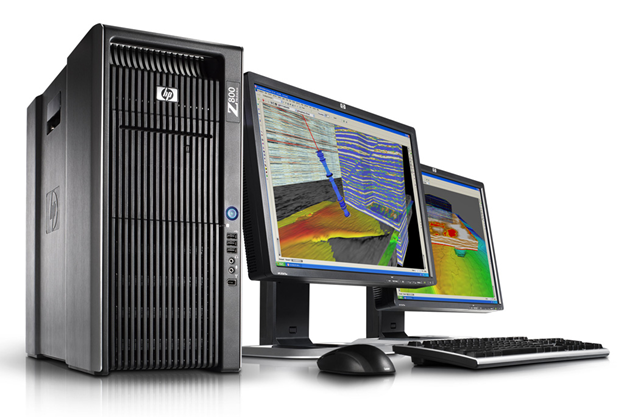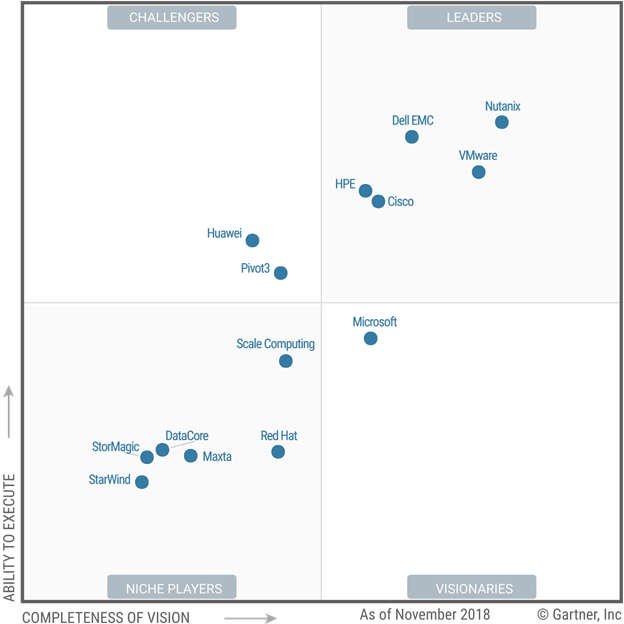Cisco just uploaded a blog post listing the “Top 10 Customer Reasons Why HyperFlex grew 2X the HCI market in Q2“. Though I am happy to see the HCI market growing, I think this post is pure marketing fluff. It is miss leading and lacks any real substance, so I have included my thoughts on their Top 10 list below. These are just my initial thoughts on this post and my thoughts alone.
In case you are curious, here are the growth numbers they are referring to:

#10. Our customers love seeing and showing off HyperFlex systems in their data center because it has a sleek industrial design from Pininfarina (yep, the same company that designs supercars)
I would consider myself a car guy, and I have never heard of Pininfarina until today. Having a server chassis designed by an auto maker does not automatically make it fast. Hell, HP came out with their Z series workstations back in 2009 which where designed after BMW, which turned out to be a flop. So if history is any lesson, designing a computer off of a European auto maker does not make it fast, just unreliable. Leave the auto makers to what they do best and focus on what you do best. #StayInYourLane

#9. HyperFlex is the industry’s first complete HCI solution that includes compute, storage, and networking, built on the trusted Cisco UCS platform
False, VxRack was launched in May 2015 but HyperFlex didn’t come until March 2016, a full year later. VxRack was actually the first HCI platform built with Nexus and UCS servers in an integrated solution.
#8. Customers want simplicity; a single vendor solution backed by a trusted and financially stable technology partner
Now this I completely agree with, customers do want a single vendor. This is exactly why VxRail is the #1 HCI solution in the world in every category it is in. VxRail offers a single number to call for support for both the compute, networking, storage, and hypervisor. Plus with Dell Financial services, you are able to pay for the whole thing as a consumption model if you would like.
#7. Customers want an industry-leading platform
“In just two and a half years in the market, HyperFlex jumped to a leader in the Gartner Magic Quadrant for Hyperconverged Infrastructure.”
And yet with only 5% market share, they are still far behind all three of Dell EMC’s HCI solutions on that exact same magic Quadrant.
#6. HyperFlex is truly eliminating silos
I am not sure what “silos” they mean by this. Between, the vCenter Plug-in, HyperFlex Connect, Cisco Intersight, UCS manager, and UCS Director, you have 5 possible different GUIs to manage a HyperFlex cluster.
#5. Cisco Intersight on HyperFlex gives our customers centralized and intelligent control of their infrastructure
Intersight does not offer any “control” since it is just a monitoring tool. If you actually want to make any changes you will need to log into one of the other 4 potential interface’s you have to use for HyperFlex (refer back to #6).

#4. HyperFlex delivers industry-leading HCI performance and operational efficiency that drives business value and reduces customer TCO
The new HX nodes with NVMe and multiple 40Gbs ports are definitely fast, but im not so sure about “industry leading”. HyperFlex does support 40Gb networking but is still limited to 2 additional ports. Compare this to the up to 16 additional 10GbE or 8 additional 25GbE ports on VxRail P Series. Over a 2x total port bandwidth advantage with VxRail.
Not to mention Garnter has them listed as tied with HPE for 3rd place in the HCI market so I’m not sure what they mean by “leading”.
#3. Customers want a future-ready platform, and find that HyperFlex is the ideal choice for Hybrid Cloud and Multicloud use cases with its support for Cloud Native workloads and Kubernetes
This applies to any VMware customer with HCX, Tanzu, and Project Pacific. Except VMware is already WAY farther along on this then Cisco is.
The VMware HCX platform provides a hybrid interconnect to enable simple, intrinsically secure and scalable application migration and mobility across data centers and clouds.
Tanzu Mission Control lets you manage an increasingly complex set of clusters and clouds as small steps, so that your organization can make the giant leap to make cloud-native operation simple. It brings together vSphere, VMC, public clouds, and managed Kubernetes services for centralized management and operations.
VMWare’s Project Pacific empowers IT Operators and Developers to accelerate innovation by converging containers and VMs into VMware’s vSphere platform with native Kubernetes. VMware has leveraged Kubernetes to re-architect vSphere and extend its capabilities to all modern and traditional applications.
#2. HyperFlex delivers unmatched simplicity to our customers when deploying HCI in ROBO and Edge environments
Please refer back to #6.
#1. Customers are able to power even more mission critical applications on HyperFlex HCI
This example is the weakest reason of all. I have no idea why they made it number 1. There is no unique application services or integration with HyperFlex that would be any different from a normal 3 tier architecture or a competitor, like VxRail. Heck, VxRail’s whole value prop is it’s integration with the hypervisor to offer VM level services.
Now, I am clearly not a huge fan of this blog post from Cisco but that doesn’t mean I am not a fan of the HyperFlex solution. Let me be clear that I do like a lot of the enhancements Cisco has made to the HyperFlex product and if you look at some of their technical enhancements over the last year, it is easy to see that Cisco is headed in the right direction. There is nothing I would love more then to see all the big server manufacturers put out the best technology they can, because that only makes everyone better. If everyone is continually pushed to keep improving their solutions, then the only people who win are the consumers.
